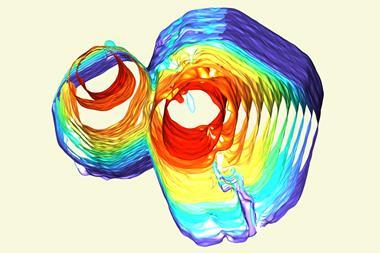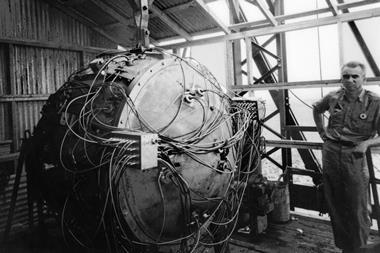Russian mountain rocks have been found to contain naturally occurring quasicrystals thought only to be possible synthetically
Scientists have discovered a rare form of solid - a quasicrystal - in a rock sample from Russia’s Koryak mountains. Quasicrystals have unusual properties and have previously only been made in the laboratory. The discovery could redefine the field of mineralogy and expand our understanding of how quasicrystals form, leading to new applications.
Quasicrystals are a type of solid with structures in between those of crystals and glasses. They are often compared to Penrose tilings, where two different shapes of tile are tessellated in patterns with local symmetry but more complex overall periodicity. The materials have interesting properties, often being harder or tougher than their crystalline counterparts, and having low surface friction or unusual optical behaviour.

Researcher Paul Steinhardt, from Princeton University, US, has been investigating quasicrystals for over 25 years, but this is the first time anyone has ever found evidence of naturally formed examples. ’The idea of looking in nature had been in my mind [all along],’ he says, ’but we really began about 10 years ago with a computer algorithm for looking systematically at existing catalogues of powder X-ray diffraction patterns to find likely quasicrystal candidates’. The team also put a call out to anyone with mineral collections, offering to check powder diffraction patterns they sent in.
That call was answered by Luca Bindi, head of mineralogy at the University of Florence, Italy, who began painstakingly preparing rock samples from Steinhardt’s list of likely candidates and other metal-rich minerals, since most known quasicrystals are complex alloys of metals. ’About six months ago, we were about to write a paper saying we’d tried all these samples and they’d failed,’ says Steinhardt, ’but then the next one didn’t fail!’
That sample contained a mixture of minerals, including tiny grains with a composition similar to known quasicrystals of aluminium, copper and iron. Analysis of these grains showed that they were indeed near-perfect quasicrystals. The fact that these quasicrystals have formed geologically overturns some of the thinking about how stable quasicrystals could be or how easily they could be made. ’We don’t know if there will be other natural examples, but it raises new questions in geology and condensed matter physics,’ says Steinhardt, ’I think of it as a beginning.’
Phillip Broadwith
Interesting? Spread the word using the ’tools’ menu on the left.
References
L Bindi et al, Science, 2009. DOI: 10.1126/science.1170827








No comments yet